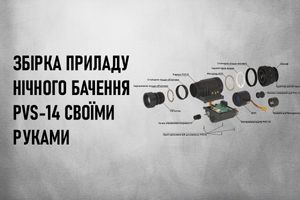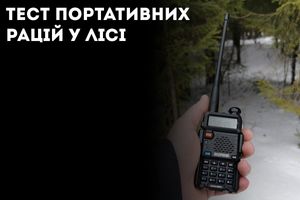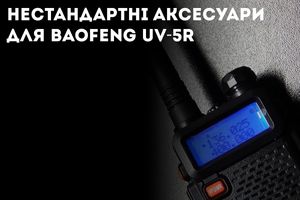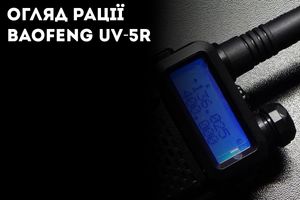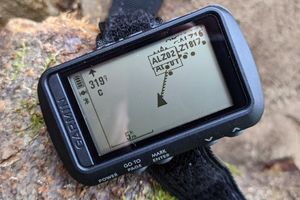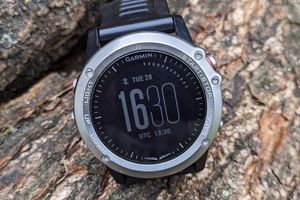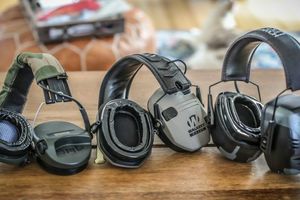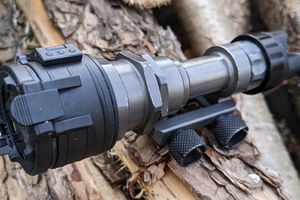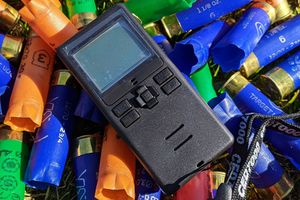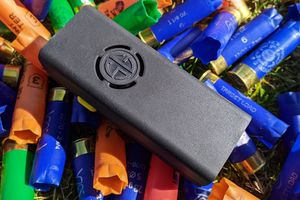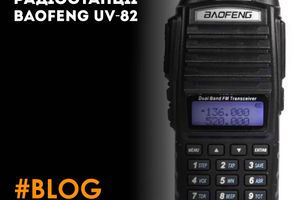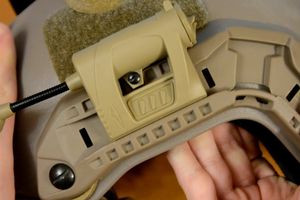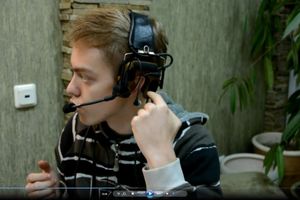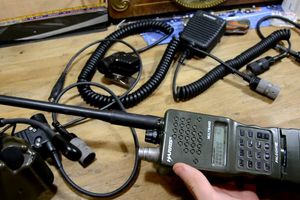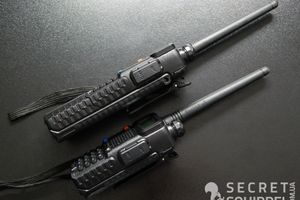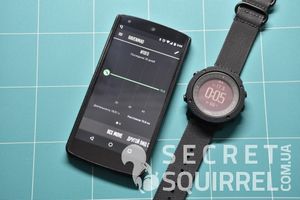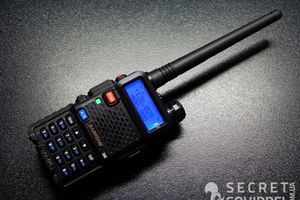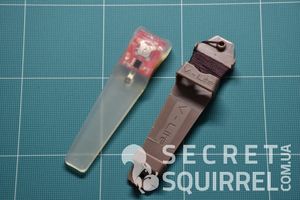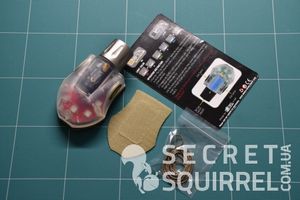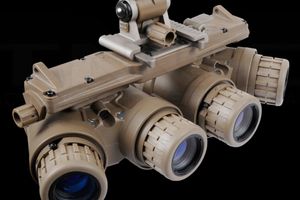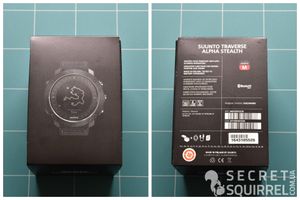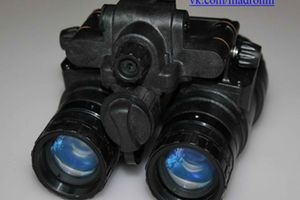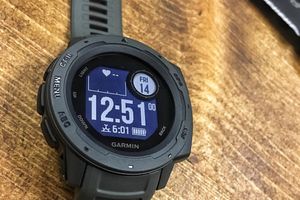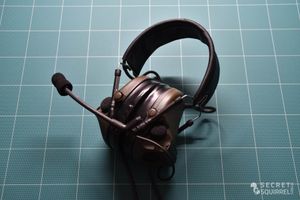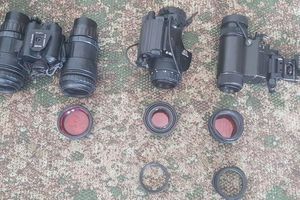All of the listed models are practically identical, and differ only in the modernization of the cases. Setting up the Baofeng uv-5r radio is quite different from the setting of a similar Kenwood TK-F8 station, the menu also differs in many points. Therefore, this article provides some guidelines for beginners. It is best to explore the setting by following the menu items in sequence.
Walkie-talkie menu (the most important items are indicated in blue):w
0. SQL Squelch opening threshold. Possible values are from 0 to 9.
1. STEP Frequency step adjustment (2.5 / 5 / 6.25 / 12.5 / 25/50/100 kHz);
2. TXP Change of transmitter power (low / high);
3. SAVE Save battery power in receive mode;
4. VOX Voice control of switching on the transmission (off / on);
5. WN Selects narrow or wide bandwidth of reception / deviation during transmission (5kHz / 2.5kHz);
6. ABR Display backlight time in seconds;
7. TDR Turn on the mode of simultaneous reception of two frequencies (receiver А / В);
8. BEEP Sound accompaniment of pressing keys;
9. TOT Transmission end time (select from 15 to 600 s);
10. R-DCS Set digital subtone in receive mode;
11. R-CTCSS Set analog sub tone in receive mode;
12. T-DCS Set digital subtone in transmission mode;
13. T-CTCSS Set analog sub tone in transmit mode;
14. VOICE Voice confirmation of keystrokes;
15. ANI-ID Transmit special ANI code at the beginning of transmission;
16. DTMF ST Setting the audibility of DTMF tones transmission;
17. S-CODE Select one 5-digit DTMF code;
18. SC-REV Select frequency scan method;
19. PTT-ID Determines when the PTT-ID code is broadcast;
20. PTT-LT PTT-ID code transmission delay, ms;
21. MDF-A Receiver A channel data display format;
22. MDF-B Same, receiver B;
23. BCL Busy transmission inhibit;
24. AUTOLK Automatic key blocking;
25. SFT-D Repeater shift direction (+/-) or OFF;
26. OFFSET Frequency offset value from 0 to 69.990 MHz;
27. MEM-CH Saving frequency to memory cell;
28. DEL-CH Delete channels;
29. WT-LED Standby backlight color;
30. RX-LED Backlight color in receiving mode;
31. TX-LED Backlight color in transmission mode;
32. AL-MOD Operating mode of the "ALARM" function;
33. BAND Selects the UHF / VHF band;
34. TDR-AB Reception mode of 2 frequencies A or B, or by the presence of a signal (OFF);
35. STE Eliminate hissing sound at the end of the transmission (ON / OFF);
36. RP-STE Same, only when working through a repeater;
37. RPT-RL Repeater end tone delay (x100 ms);
38. PONMSG Information shown on the display when switched on;
39. ROGER Broadcast transmission end sound signal (ON / OFF);
40. RESET Return to factory settings;
Menu operation:
1. Press the [MENU] key to turn on the setup menu.
2. Move to the desired menu item using the [▼] and [▲] keys.
3. Press the [MENU] key again to change the selected option.
4. Select the desired option value using the [▼] and [▲] keys.
5. Save the setting by pressing the [MENU] key.
Walkie talkie display
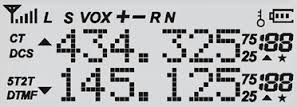
L - low power;
S - enable the reception of two frequencies A and B;
VOX - activation of the voice transmission control function;
+/- - repeater shift;
ST - turn on the analog tone;
DCS - enable digital tone;
N - turn on a narrow band;
R - Reverse function is on;
Key symbol - key lock.
Purpose of all buttons
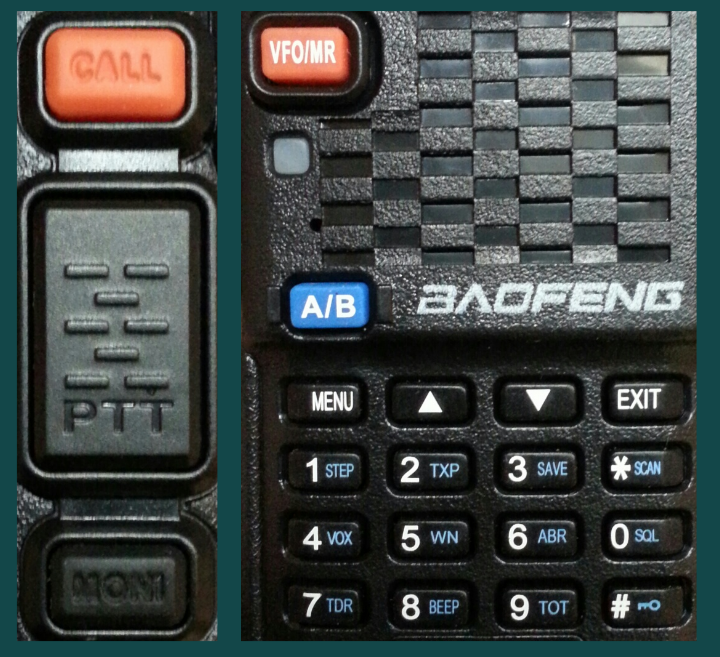
1. "CALL" - Short press turns on the FM receiver. Pressing and holding it triggers an alarm (ALARM function).
2. "PTT" - enable transmission;
3. "MONI" - a quick press turns on the flashlight. Pressing it again causes the flashlight to flash. By clicking again, turn it off. Long press disables the squelch.
4. "VFO / MR" - switching frequency and channel modes.
5. "А / В" - switches the frequency or channel of active reception (line A or B).
6. "MENU" - entry into the radio menu, as well as confirmation of changing settings or settings (in this case, the key works as "OK").
7. "▲ ▼" - allow scrolling through the menu items, as well as selecting the desired channels or sequentially changing the frequency with a given step.
8. "EXIT" - used to exit the menu or to return the station to the original mode, or to clear the not fully dialed frequency.
9. Numeric keys allow you to enter the desired frequency or channel number. Also used for quick access to the main menu items (marked in blue). To do this, press the "MENU" button, then the corresponding key.
Working with the most requested functions:
1. Function "ALARM"
To call a correspondent, you can use the "Alarm" function. Go to the menu and, in particular, to point 32. Here the default is "Site". Use the ▲ arrow to set the "Tone" value. After that, by pressing and holding the "CALL" button, the alarm signal will be automatically transmitted to your correspondent. To turn off the transmission of the alarm call, press the "CALL" button again.
2. Changing RF power
For the convenience of switching the output power of the transmitter, a short press of the "#" button is provided. Pressing it again will return the previous power. Even if the channel is recorded with a certain power, it can also be quickly changed (High / Low) by pressing this key. In this case, the symbol "L" appears or disappears on the screen of the device. It means low power. This symbol is not displayed at high power.
3. Scan function
In order to start scanning, you need to put the station in the frequency mode and then adjust the frequency tuning step through item 1 in the menu. You can activate scanning by pressing and holding the (*) button. It is easy to stop scanning with the Exit button (short press). The scanning direction of the range can be easily changed by pressing the 《》 buttons. The scanning method changes in the 18th item of the main menu.
4. Keypad lock
It is carried out by pressing and holding the (#) key. Unlocking is achieved by the same push.
5. Noise suppressor (SN)
Adjustment of the NR sensitivity is made through item "0" of the (SQL) menu. The lower the value, the more sensitive the opening threshold of the FS. The value "0" means disabling the SHP. The optimal value is from 3 to 5. In case of intense interference, it is recommended to set the WB to 6 - 10. But, then, the receiver will ignore very weak useful signals.
6. VOX function
Allows hands-free communication. The transmission is activated by the sound of the voice. This function is activated via menu item 4 (ON / OFF). The threshold of the system is also regulated here. The highest sensitivity is achieved with a value of "1". But it is worth remembering that with such a sensitivity, the walkie-talkie will turn on transmission at the slightest vibration and shaking. Therefore, the sensitivity must be selected experimentally.
7. Frequency tuning step
Set using item 1 of the menu. Any desired value is selected from the possible. The standard default is 25 kHz. When tuning the radio to PMR channels, you need to set the value to 6.25 kHz.
8. TOT function
It is needed to limit the time of the station in the transmission mode. This is to avoid overloading the channel or frequency for ethical communication reasons, and to prevent station overheating and premature battery discharge. Configurable through item 9 of the menu. Usually, the maximum value is set to 600 seconds.
9. Function of simultaneous reception of two frequencies (channels) TDR
You can prioritize either channel A or channel B, or enable simultaneous reception (A / B). Installed through menu item 7.
10. Setting up the FM receiver
The receiver is switched on by pressing the "CALL" button. Tuning to broadcast stations is done by scanning (Scan button), or by direct frequency entry. Since the receiver has a dual range (65 - 75/76 - 108 MHz), you can switch bands using the А / В button. When a signal appears on the active channel (frequency) of the radio, the FM receiver turns off, and resumes operation after a short time if the station does not receive signals from subscribers.
11. Scanning CTCSS / DCS Tones
We go to item 11 of the menu and activate any analog tone. Then, on the auxiliary radio, we press the transmission on the same frequency that is set on the radio to be tuned. Now press the "Scan" button. The radio, in the presence of a signal, starts searching for the subtone of the transmitting radio. Scanning stops when a tone is found. The search for a digital tone is carried out in the same way through the 10th menu item. Please note that the radio must transmit a tone so that the receiving side can find it.
The rest of the functions (BEEP, ABR, TXP, SAVE) are enabled with quick access to the corresponding menu items by pressing the (Nenu) + number key in succession.
Examples of
Recording frequency to memory:
1. We dial the desired frequency;
2. Go to the menu;
3. Correct the parameters of the future channel - TX power, WB level (SQL);
4. Select item 27 with arrows ▲ ▼;
5. Press the "Menu" button again;
6. Select the memory cell number with the arrows ▲ ▼;
7. Save the selected value by clicking "Menu";
8. Exit the menu by clicking "Exit";
Frequency recording with repeater shift:
1. We dial the desired frequency;
2. Go to the menu;
3. Set the required power of the transmitter and the level of operation of the SHP;
4. Select item 25, press "menu" again;
5. We activate the direction of the frequency shift during transmission ("+" or "-");
6. Go to point 26 and select the shift value in megahertz;
7. Go to point 27 and save the channel as described above (also see the note);
Delete channels:
1. In the menu, select item 28;
2. Press "Menu" and with arrows ▲ ▼ select the cell number to be deleted;
3. Delete the selected channel with the "Menu" button;
4. Exit the menu.
Recording of permitted frequencies:
It is best to delete all preset channels at once, as they contradict the allowed areas. The easiest to record is an LPD band with 69 channels. The first channel with a value of 433.075 MHz. The second channel and subsequent ones are recorded in 25 kHz steps. You can also record 14 channels FRS band, 8 channels PMR. In the latter case, the tuning step is set at 6.25 kHz. The first channel is 446.00625 kHz.
Note: When recording a channel, tone protection (CTCSS or DCS, etc.) can also be set. Subtones are set in order not to hear foreign groups using the same radio frequencies *. Selects either analog CTCSS or digital DCS tones. In this case, you need to set them in the T-CTCSS transmission and R-CTCSS (analog tone) or digital (T-DCS; R-DCS) reception mode via menu items 10-13. Confirmation of the entry is carried out by pressing the "Menu" key. You need to know that the tones can be set to either analog only or digital. You cannot select analog + digital code for reception or transmission at the same time. But you can put an analog / digital code for reception, and a digital / analog code for transmission, respectively.
*Attention! Installing CTCSS or DCS does not guarantee the confidentiality of conversations. A subscriber with subtones turned off will hear everyone on the current channel.
Most of the settings are set by default, which is sufficient for normal use of the radio. Therefore, they do not need to be changed. The main features that need to be adjusted are:
1. Set the required power,
2. Store channels in memory,
3. Set the squelch threshold.

























































































































